Top 10 Data Integration Tools for On-Premise and Cloud Deployment
Summarize this article with:
✨ AI Generated Summary
Effective data integration requires choosing tools that align with your infrastructure, data volume, team expertise, and compliance needs. Key considerations include:
- Airbyte offers an open-source, flexible platform with 600+ connectors, hybrid deployment, real-time sync, and strong enterprise security without vendor lock-in.
- Other top tools include Oracle Data Integrator, Informatica PowerCenter, Microsoft Azure Data Factory, Apache NiFi, Talend, IBM DataStage, SnapLogic, Hevo Data, and Boomi, each with unique strengths in deployment, scalability, ease of use, and integration capabilities.
- Best practices emphasize clear goals, automation, data quality, monitoring, governance, and iterative improvement to ensure successful integration projects.
Managing data effectively requires a solid data integration strategy that can unify diverse data formats, ensure consistent quality, and enable seamless synchronization across systems. Whether your infrastructure is on-premise, cloud-based, or a hybrid mix, selecting the right data integration tool is critical to meeting your business needs.
With many cloud data integration tools available, each offering different features and deployment options, it can be challenging to identify the best fit for your organization. This guide explores the top 10 data integration tools, highlighting their key strengths—including those supporting on-premise, cloud, or hybrid deployments—to help you make an informed choice.
By understanding these solutions, you can improve data quality, automate business processes, and drive more insightful business intelligence.
What Are the Top Cloud Data Integration Tools Available?
1. Airbyte
Airbyte stands out as a modern data integration platform that combines the flexibility of open-source development with enterprise-grade security and governance capabilities. The platform has emerged as a leading solution for organizations seeking to modernize their data infrastructure without sacrificing control or creating vendor dependencies.

Airbyte processes over 2 petabytes of data daily across customer deployments, demonstrating its capability to handle enterprise-scale workloads while maintaining the flexibility that technical teams demand. The platform's open-source foundation eliminates licensing costs while providing access to over 600 pre-built connectors, significantly reducing the time and complexity traditionally associated with data integration projects.
The platform's strength lies in its deployment flexibility, supporting cloud-native, hybrid, and on-premises architectures without compromising functionality. This approach addresses the growing need for data sovereignty and compliance while enabling organizations to leverage modern cloud capabilities. Airbyte generates open-standard code, ensuring that intellectual property remains portable and preventing vendor lock-in that constrains future technology decisions.
Enterprise adoption has accelerated due to Airbyte's comprehensive security and governance features, including end-to-end encryption, role-based access control integration with enterprise identity systems, and compliance with SOC 2, GDPR, and HIPAA requirements. The platform's AI-powered connector builder enables rapid custom integration development, while PyAirbyte provides Python developers with tools to quickly build data-enabled applications.
2. Oracle Data Integrator (ODI)
Oracle Data Integrator provides robust ETL and ELT capabilities specifically designed for enterprises with significant investments in Oracle database technologies. The platform leverages Oracle's database engine for transformation processing, potentially reducing data movement and improving performance for Oracle-centric architectures.
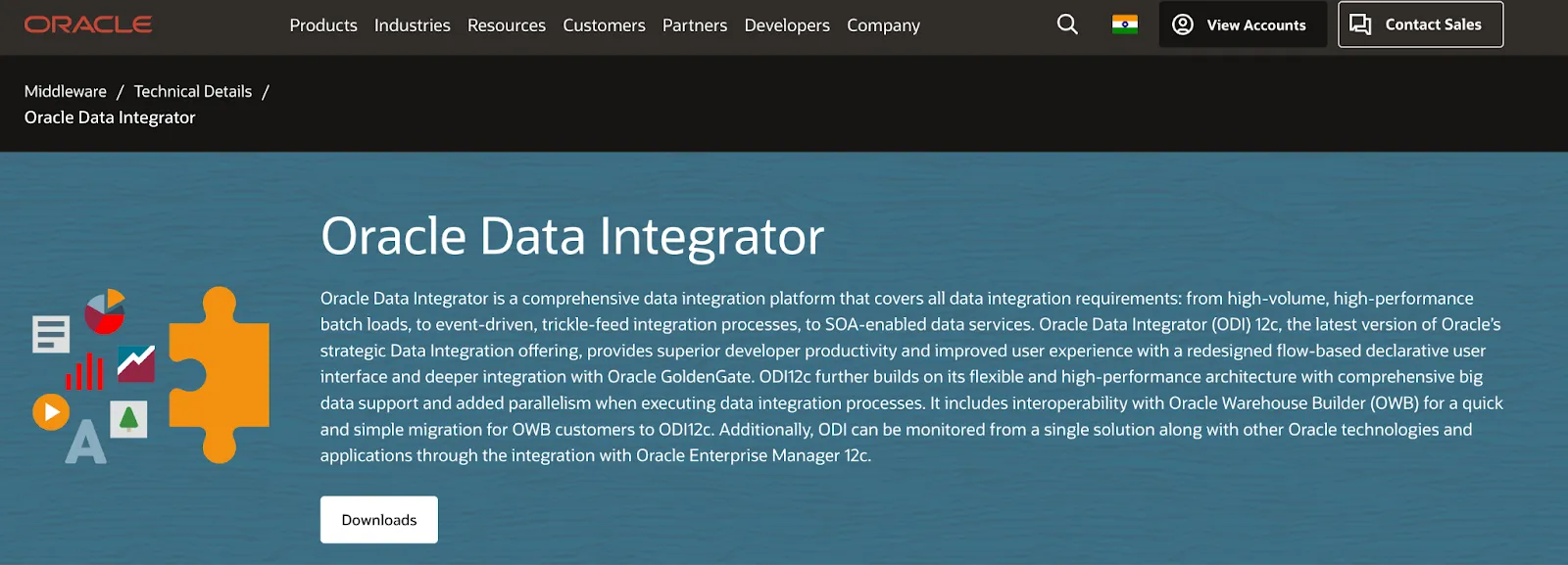
The platform's transformation engine supports complex data processing workflows and provides deep integration with Oracle Cloud Infrastructure, Oracle Autonomous Database, and other Oracle ecosystem components. ODI's approach to transformation optimization can significantly improve performance for Oracle-based data warehouses and analytical systems.
ODI supports both traditional batch processing and real-time change data capture scenarios, making it suitable for modern data architectures that require immediate data availability. The platform includes comprehensive metadata management and data lineage capabilities that are essential for enterprise governance and compliance requirements.
3. Informatica PowerCenter
Informatica PowerCenter represents one of the most established enterprise data integration platforms, with decades of development focused on high-volume, complex transformation scenarios. The platform has evolved to support both cloud and on-premises deployments while maintaining its reputation for handling mission-critical data integration requirements.
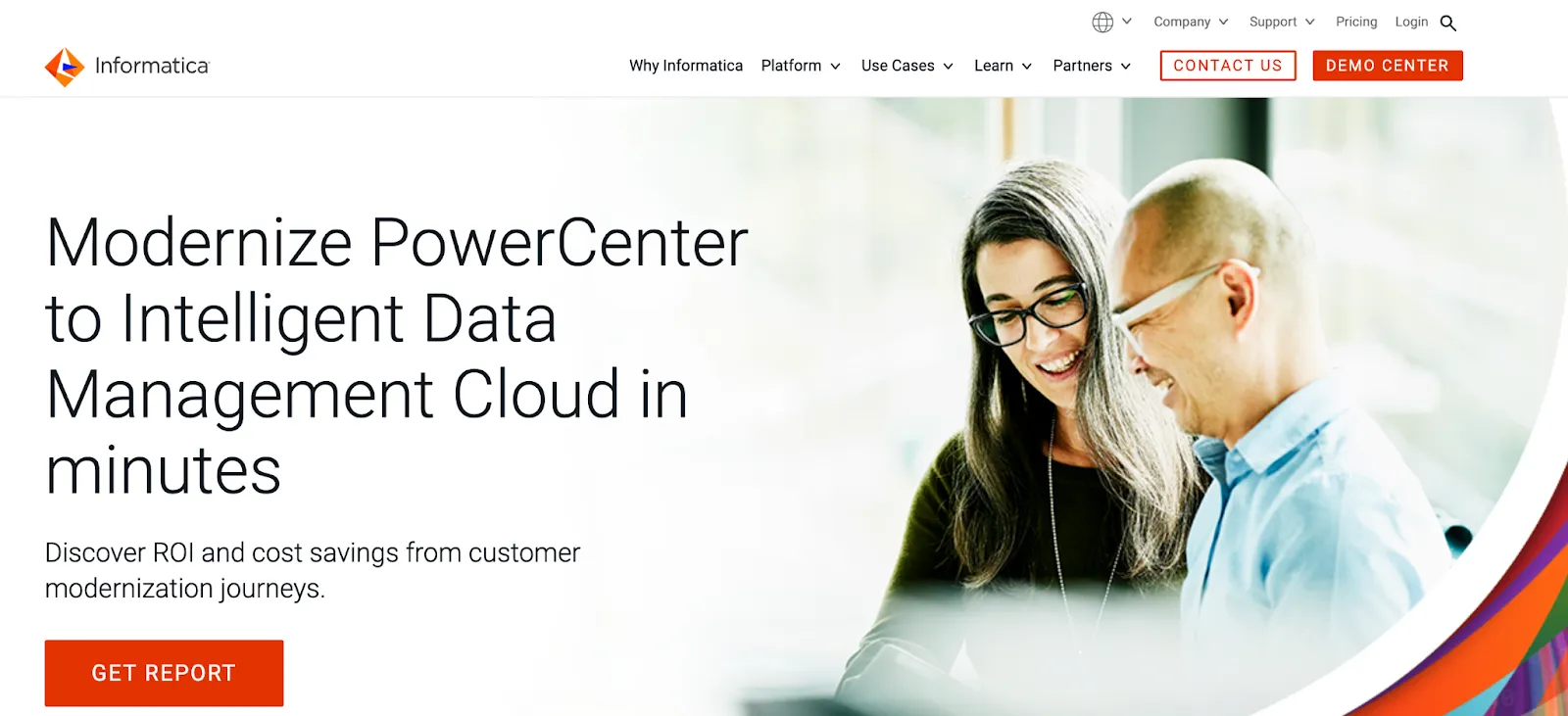
PowerCenter's strength lies in its comprehensive transformation and data cleansing capabilities, making it particularly valuable for organizations dealing with data quality challenges across multiple sources. The platform provides extensive support for complex business rules, data validation, and error handling that are essential for regulated industries and high-stakes analytical applications.
The platform supports both real-time and batch processing modes, with advanced capabilities for parallel processing that can handle extremely high data volumes. PowerCenter's metadata management and data lineage features provide complete visibility into data transformations and dependencies, supporting both operational management and regulatory compliance requirements.
Recent updates have focused on cloud integration and modernization capabilities, including improved connectivity to cloud data platforms and enhanced support for modern data formats. However, the platform's traditional architecture and licensing model can create challenges for organizations seeking more agile, cost-effective approaches to data integration.
4. Microsoft Azure Data Factory
Azure Data Factory serves as Microsoft's cloud-native data integration service, designed to seamlessly integrate with the broader Azure ecosystem and provide serverless, scalable data processing capabilities. The platform has gained significant traction among organizations already invested in Microsoft technologies or pursuing Azure-first cloud strategies.

The platform's fully managed, serverless architecture eliminates infrastructure management overhead while providing automatic scaling based on workload demands. Data Factory integrates natively with Power BI, Azure Synapse Analytics, and other Microsoft analytics tools, creating a unified data platform experience for organizations using these technologies.
Data Factory's visual drag-and-drop interface simplifies pipeline creation for users without extensive technical backgrounds, while its integration with Azure DevOps enables proper version control and deployment automation. The platform supports both code-free and code-first development approaches, accommodating different team preferences and technical requirements.
The service includes built-in monitoring and alerting capabilities that provide visibility into pipeline performance and data quality issues. Azure Data Factory's pricing model based on actual usage can provide cost advantages for variable workloads, though complex pricing structures can make cost prediction challenging for some organizations.
5. Apache NiFi
Apache NiFi provides a powerful, web-based interface for automating the flow of data between systems, with particular strength in real-time data processing and complex workflow management. As an open-source solution, NiFi offers flexibility and customization capabilities that appeal to organizations with specific requirements or limited budgets.
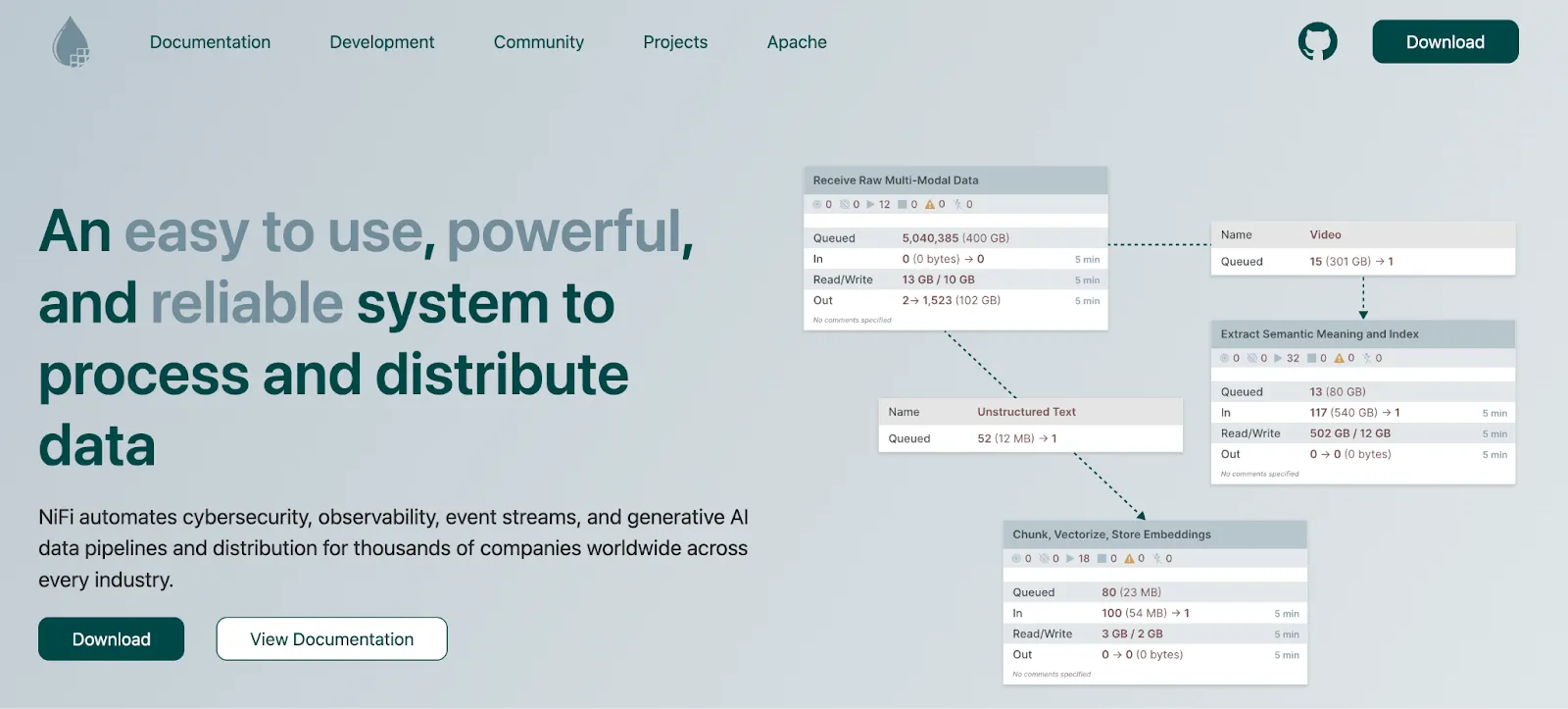
NiFi's visual flow management interface enables users to design complex data routing, transformation, and enrichment workflows through drag-and-drop operations. The platform excels at handling streaming data and event-driven architectures, making it valuable for organizations implementing real-time analytics and operational monitoring capabilities.
The platform's fine-grained security model provides detailed control over data access and flow permissions, supporting enterprise security requirements and regulatory compliance needs. NiFi's provenance tracking capabilities maintain complete visibility into data lineage and transformation history, which is essential for debugging, auditing, and compliance reporting.
NiFi's extensible architecture allows for custom processor development and integration with specialized systems or protocols. The platform's clustering capabilities provide high availability and horizontal scaling, though proper configuration and management require significant technical expertise.
6. Talend Data Integration
Talend offers both open-source and commercial data integration platforms, providing organizations with flexibility in choosing the deployment model that best fits their requirements and budget constraints. The platform emphasizes end-to-end data management capabilities that extend beyond basic integration to include data quality, governance, and preparation features.
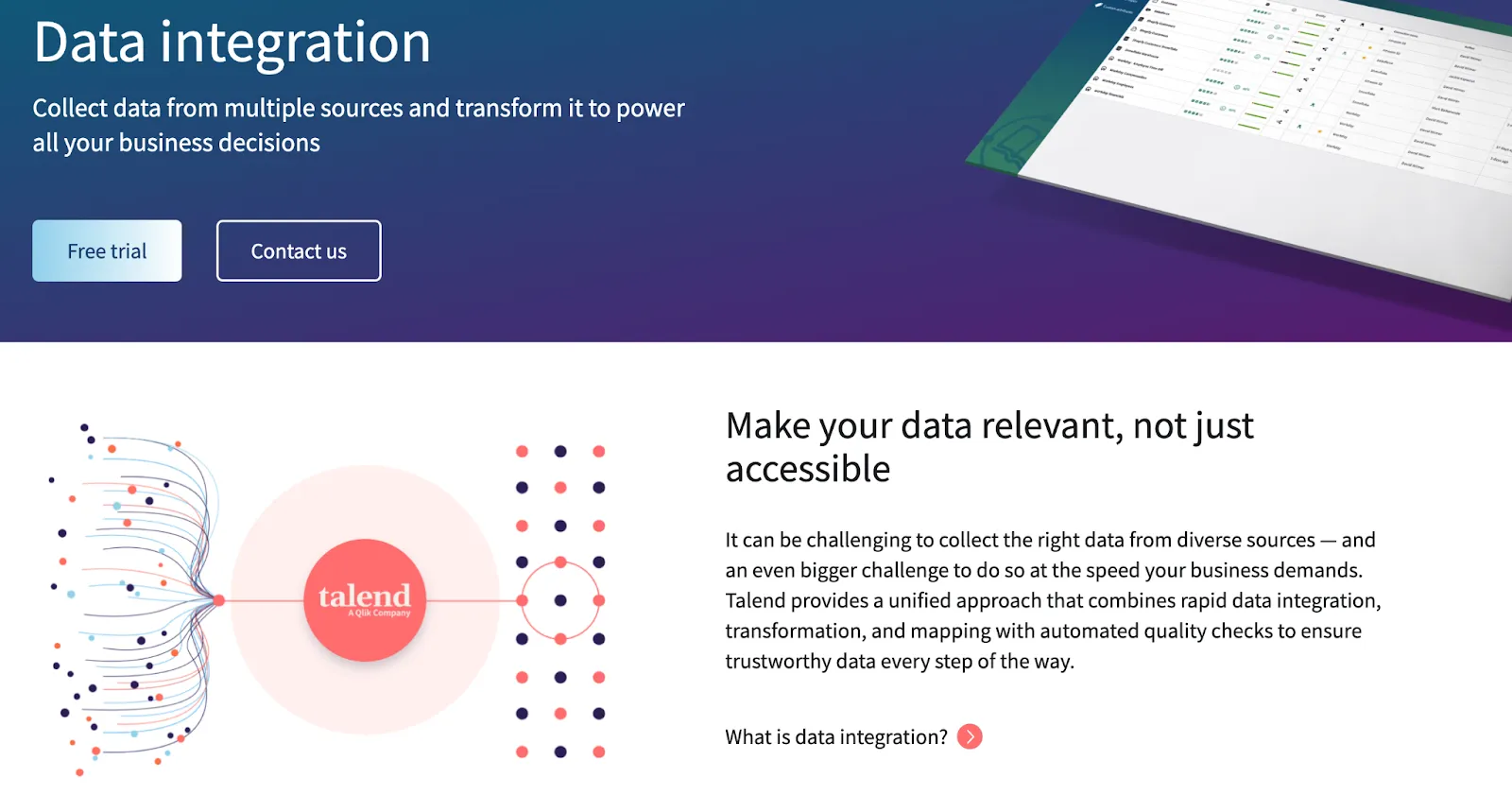
Talend's connector ecosystem includes over 1000 pre-built integrations covering databases, cloud services, applications, and file systems. The platform's built-in data profiling and validation capabilities help organizations identify and address data quality issues before they impact downstream analytical processes.
The platform supports both real-time and batch processing scenarios, with particular strength in handling complex transformation logic and business rules. Talend's metadata management capabilities provide comprehensive visibility into data lineage and transformation processes, supporting both operational management and governance requirements.
Talend's enterprise offerings include advanced features such as data catalog capabilities, collaborative development tools, and enterprise-grade security controls. However, the transition from open-source to enterprise editions can involve significant cost increases that may challenge budget-conscious organizations.
7. IBM DataStage
IBM DataStage provides enterprise-grade ETL capabilities designed for high-volume, mission-critical data integration scenarios. The platform has evolved to support both traditional on-premises deployments and modern cloud architectures while maintaining its reputation for reliability and performance in demanding environments.
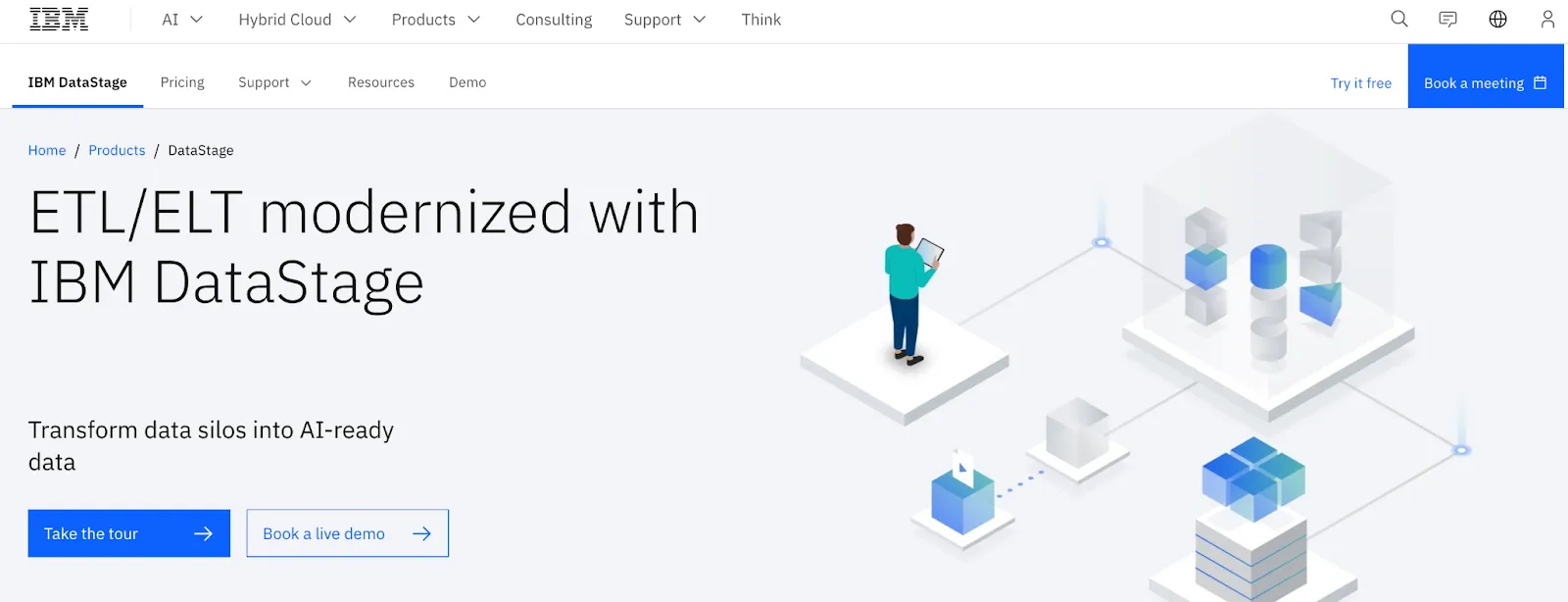
DataStage's parallel processing architecture enables it to handle extremely large data volumes with high performance, making it suitable for organizations with demanding batch processing requirements. The platform's deep integration with IBM's broader data management portfolio, including IBM Cloud Pak for Data, provides comprehensive analytics platform capabilities.
The platform includes advanced transformation capabilities and supports complex data processing scenarios that require sophisticated business logic. DataStage's metadata management and impact analysis features help organizations understand data dependencies and plan changes safely in complex environments.
DataStage's enterprise focus means it includes comprehensive security, monitoring, and governance capabilities required for regulated industries and mission-critical applications. However, this enterprise orientation also contributes to higher costs and complexity that may not be justified for smaller organizations or simpler use cases.
8. SnapLogic
SnapLogic positions itself as an intelligent integration platform that combines ease of use with advanced capabilities, including AI-powered features that assist with integration development and optimization. The platform emphasizes rapid deployment and user-friendly interfaces that enable both technical and business users to participate in integration projects.
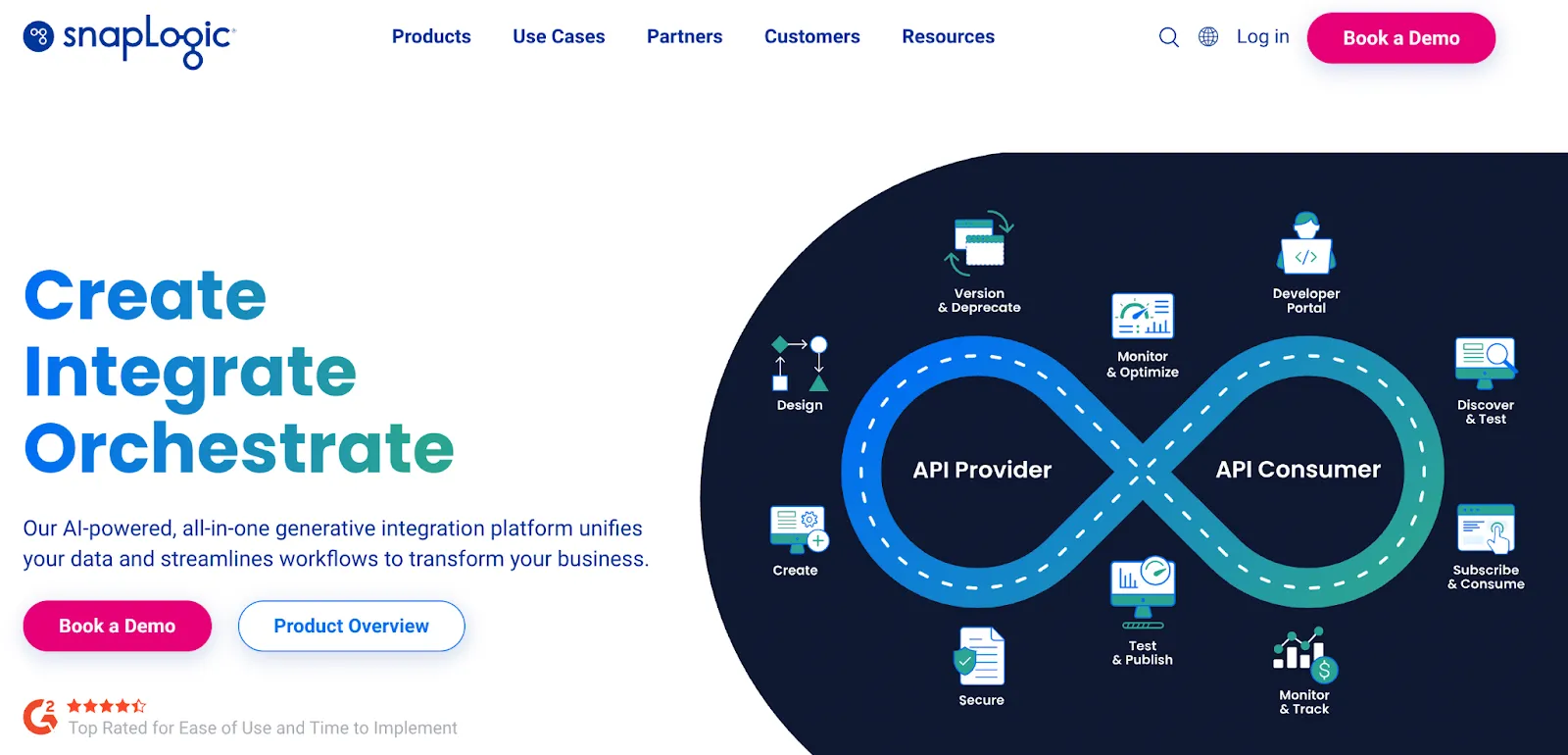
The platform's visual pipeline builder provides an intuitive drag-and-drop interface for creating data flows, while AI-powered suggestions help users identify optimization opportunities and potential integration patterns. SnapLogic's Snaps (pre-built connectors) ecosystem includes over 500 integrations with popular business applications and data platforms.
SnapLogic supports both real-time and batch processing scenarios, with elastic cloud infrastructure that automatically scales based on workload demands. The platform includes comprehensive monitoring and management capabilities that provide visibility into pipeline performance and data quality metrics.
The platform's focus on user experience and rapid deployment makes it attractive for organizations seeking to implement integration projects quickly without extensive technical expertise. However, organizations with complex customization requirements may find the platform's abstractions limiting for advanced use cases.
9. Hevo Data
Hevo Data focuses on providing simple, no-code data integration capabilities that enable organizations to quickly establish data pipelines without extensive technical resources. The platform particularly appeals to startups, small businesses, and analytics teams seeking rapid time-to-value from their data integration investments.
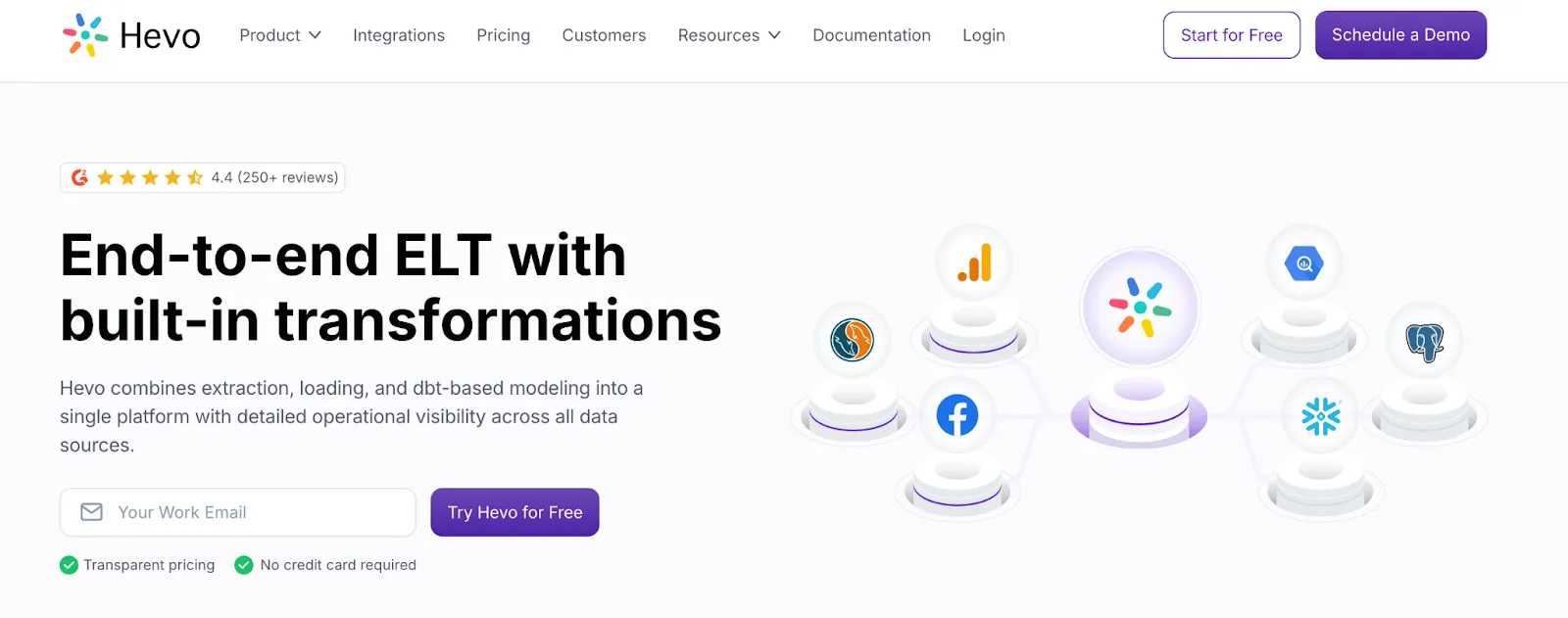
The platform's strength lies in its simplicity and ease of setup, enabling users to establish data connections and begin data flow within minutes rather than days or weeks. Hevo supports both cloud data sources and on-premises systems through agent-based connectivity, providing flexibility for hybrid environments.
Hevo's real-time synchronization capabilities ensure that data warehouses and analytics platforms receive fresh data continuously, supporting operational analytics and responsive decision-making. The platform includes built-in data transformation capabilities, though these are more limited compared to enterprise-focused platforms.
The platform's pricing model and feature set are designed for cost-conscious organizations that prioritize simplicity and speed over advanced customization capabilities. While this approach provides excellent value for straightforward integration scenarios, it may not meet the needs of organizations with complex transformation requirements or extensive governance needs.
10. Boomi
Boomi provides a cloud-native integration platform that emphasizes ease of use and rapid deployment, particularly for organizations with significant SaaS application ecosystems. The platform's strength lies in connecting cloud applications and services, making it valuable for businesses undergoing digital transformation initiatives.
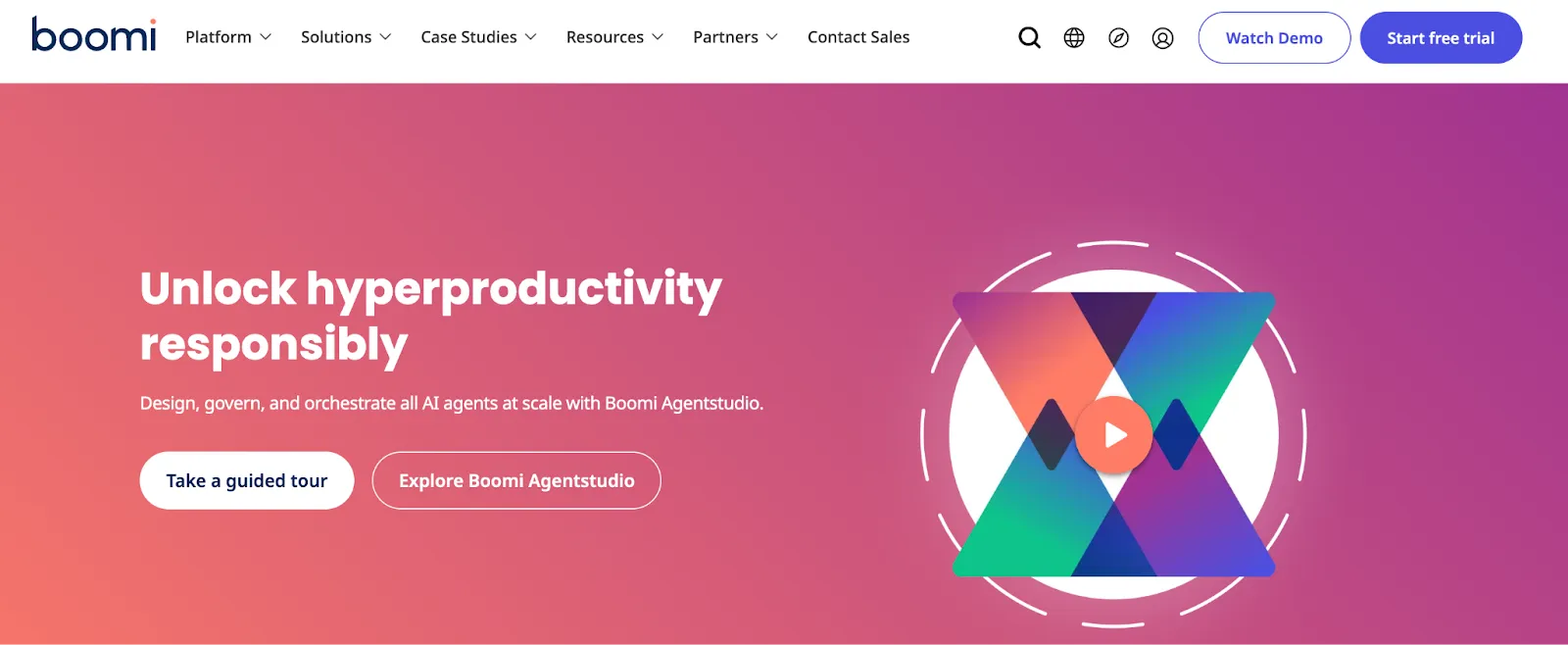
The platform's visual interface enables non-technical users to create integration workflows through drag-and-drop operations, reducing the dependency on specialized development resources. Boomi's pre-built connector library includes over 300 integrations with popular business applications, cloud services, and databases.
Boomi's cloud-native architecture provides automatic scaling and infrastructure management, eliminating the operational overhead associated with traditional integration platforms. The platform includes comprehensive monitoring and management capabilities that provide visibility into integration performance and data quality.
The platform's focus on SaaS integration and ease of use makes it particularly attractive for organizations with distributed application environments and limited technical resources. However, organizations with high-volume ETL requirements or complex transformation needs may find the platform's capabilities insufficient for demanding scenarios.
How Do You Choose the Right Cloud Data Integration Tool?
Selecting the optimal data integration solution requires careful evaluation of your specific requirements and organizational constraints. Consider these key factors when evaluating cloud data integration tools for your environment.
Integration complexity plays a crucial role in tool selection. Simple SaaS-to-warehouse connections have different requirements than multi-source, transformation-heavy pipelines that involve complex business logic.
Data volume considerations ensure the tool can scale with your load. Evaluate both current requirements and projected growth to avoid costly migrations as your data needs expand.
Team expertise influences which tools will be successful in your organization. Favor no-code or low-code options if technical skills are limited, while technical teams may prefer more flexible platforms.
Budget constraints affect long-term sustainability. Open-source or lower-cost options work well for early-stage companies, while enterprises may justify premium solutions for advanced features.
Compliance and security requirements determine which platforms meet your governance needs. Look for encryption, role-based access control, and audit logging capabilities.
Deployment preferences impact operational control. Consider whether cloud, on-premises, or hybrid deployment models align with your infrastructure strategy.
Connector availability affects implementation speed. Native integrations with your existing technology stack reduce development overhead and improve reliability.
Support and community resources influence long-term success. Evaluate vendor SLAs versus open-source community support based on your internal capabilities.
What Are the Best Practices for Successful Data Integration Projects?
Define integration goals with clear, measurable objectives that align with business outcomes. Establishing specific success criteria helps guide tool selection and project implementation decisions.
Automate workflows to reduce manual touchpoints and improve reliability. Automation also reduces the risk of human error and enables consistent processing across large data volumes.
Clean and validate data to boost downstream accuracy and trust. Implementing data quality checks at ingestion prevents issues from propagating through your analytics pipeline.
Monitor pipelines with comprehensive alerting and logging systems. Proactive monitoring enables quick resolution of issues before they impact business operations.
Govern your data to stay compliant with industry standards and regulatory requirements. Proper governance also improves data discoverability and collaboration across teams.
Iterate and improve your integration processes as data sources evolve. Regular reviews and updates ensure your integration architecture remains aligned with changing business needs.
Ready to Simplify Your Data Integration? Discover Airbyte Today
Modern data integration requires tools that balance flexibility with enterprise-grade capabilities. As you evaluate options, consider solutions that offer both open-source innovation and commercial support for critical business operations.
Airbyte provides an open-source platform with 600+ connectors, real-time sync, and hybrid deployment support that eliminates vendor lock-in while maintaining enterprise security. Start a free trial or demo to see how Airbyte can streamline your data workflows and accelerate your analytics initiatives.
Frequently Asked Questions
What is the difference between on-premise and cloud data-integration tools?
On-premise tools run on a company's infrastructure, offering greater control over data residency and security. Cloud tools are hosted by vendors, making them easier to scale and manage. Many modern tools support both for hybrid environments.
How do I choose between open-source and commercial tools?
Open-source options like Airbyte or Apache NiFi provide flexibility and cost savings but may need more in-house expertise. Commercial tools such as Informatica or Boomi come with support and governance features at a higher cost.
Can these tools integrate data in real time?
Yes—Airbyte, SnapLogic, Apache NiFi, and others all support real-time integration.
Which tools work best for hybrid cloud environments?
Solutions like Airbyte offer strong hybrid support, integrating cloud services with on-prem systems.
Are no-code or low-code tools reliable for enterprise integration?
Yes. Platforms like Airbyte deliver low-code/no-code interfaces without compromising scalability or reliability, ideal for teams needing rapid deployment.

.webp)
.webp)